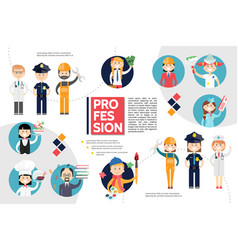Recognizing Seasonal Influences On Commercial Exterior Painting: Essential Understanding For Success
Recognizing Seasonal Influences On Commercial Exterior Painting: Essential Understanding For Success
Blog Article
Material Create By-Doherty Chaney
When you're intending an industrial external paint job, seasonal factors can make or damage your outcomes. You'll wish to take into consideration exactly how temperature level and moisture impact paint application and drying out times. Selecting the ideal season can ensure your paint adheres effectively and lasts much longer. But which periods are really the very best for this sort of work? Let's explore the key elements that can influence your project's success.
The Impact of Temperature on Paint Application
When you're planning a business exterior painting project, the temperature can dramatically affect exactly how well the paint adheres and dries.
Preferably, you wish to paint when temperature levels range in between 50 ° F and 85 ° F. If it's too cool, the paint may not treat appropriately, resulting in concerns like peeling off or breaking.
On the flip side, if it's also warm, the paint can dry also promptly, protecting against correct adhesion and leading to an uneven surface.
You need to also think about the time of day; early morning or late afternoon offers cooler temperature levels, which can be more desirable.
Always inspect the maker's suggestions for the certain paint you're utilizing, as they frequently provide guidance on the suitable temperature level array for ideal outcomes.
Humidity and Its Effect on Drying Times
Temperature isn't the only ecological aspect that affects your industrial external paint task; moisture plays a substantial role too. High moisture levels can decrease drying out times drastically, influencing the total quality of your paint task.
When the air is saturated with dampness, the paint takes longer to cure, which can cause issues like poor attachment and a greater danger of mildew development. If you're repainting on a specifically humid day, be prepared for extensive delay times in between layers.
It's important to monitor neighborhood climate condition and plan accordingly. Ideally, go for moisture levels between 40% and 70% for optimal drying.
Maintaining these factors in mind guarantees your project remains on track and delivers an enduring surface.
Best Seasons for Commercial Exterior Painting Projects
What's the best time of year for your industrial external paint projects?
Spring and very early autumn are normally your best bets. Throughout https://interior-painters-near-me18528.is-blog.com/41580069/disregarding-the-advantages-of-collaborating-with-a-specialist-painting-business-can-result-in-significant-financial-mistakes , temperature levels are moderate, and moisture levels are often lower, creating perfect problems for paint application and drying out.
simply click the following web site , which can create paint to dry also promptly, causing bad attachment and coating. Likewise, winter's chilly temperature levels can prevent proper drying out and treating, running the risk of the durability of your paint job.
Aim for days with temperatures between 50 ° F and 85 ° F for optimal outcomes. Remember to examine the neighborhood weather forecast for rain, as damp problems can spoil your task.
Preparation around these elements guarantees your painting task runs efficiently and lasts longer.
Conclusion
Finally, intending your industrial external painting projects around seasonal considerations can make a substantial difference in the outcome. By scheduling work throughout the perfect temperatures and moisture degrees, you'll make sure better adhesion and drying times. Bear in mind to watch on regional weather report and pick the correct time of year-- springtime and very early loss are your best choices. Taking these steps will certainly aid you achieve a sturdy and professional finish that lasts.
